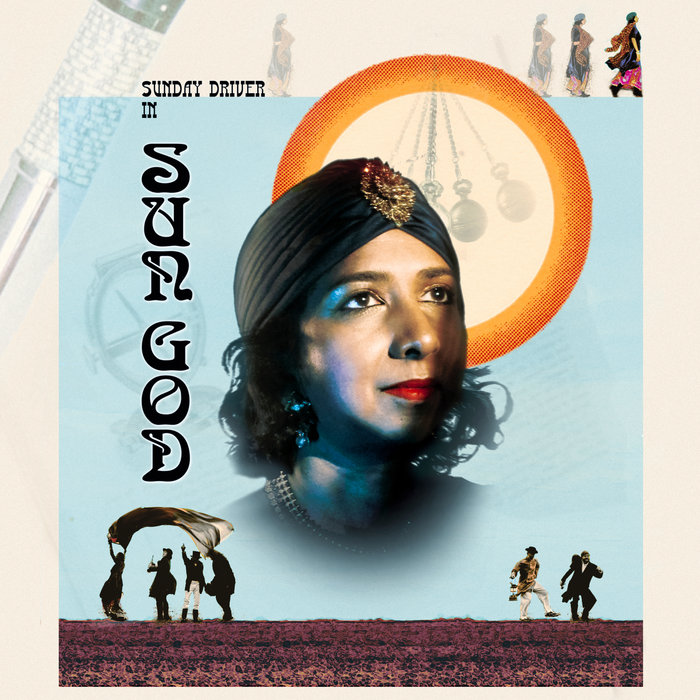
Sun God – Sunday Driver UK
this blog is GROOVY – check out great Soul, Funk, Jazz, Hip Hop, Bass, Breaks , Reggae, House n many more TUNES
Hey there, fellow music lovers! Grab your favorite drink, and let’s take a wild ride through the vibrant world of experimental jazz rock. This genre is like that funky cousin who crashes family reunions—unexpected yet totally unforgettable!
Now, if you wanna understand where this groovy fusion began, we gotta head back to the late ’60s and early ’70s. Picture it: electric guitars buzzing with psychedelic colors while saxophones scream their hearts out over tight drum grooves. Artists started pushing boundaries, merging the improvisational spirit of jazz with the raw power of rock.
The August 1969 Woodstock Festival was a key moment for many musicians experimenting in both genres. Bands like Chicago and Blood Sweat & Tears kicked off the scene by mixing jazzy horns and soulful vocals into their rockin’ tunes—setting the stage for what would come next.
A handful of bands really took that radical leap into uncharted sound territory:
Led by guitar wizard John McLaughlin, they brought an Eastern influence to jazz rock. The band combined complex time signatures with blistering solos that could send chills down your spine! Fun fact? Their album Birds of Fire was so popular it made people question if birds could actually fly at such crazy speeds!
This legendary group took things even further with their blend of funk and avant-garde jazz textures. Led by keyboardist Joe Zawinul and bassist Jaco Pastorius (who played his bass like he had wings), they created sonic landscapes that felt otherworldly. Jaco’s infamous technique? Playing his bass without amplification once during a concert just to make sure all eyes (and ears) were glued to him—a showman indeed!
Oh boy, we can’t talk about experimental anything without mentioning Mr. Zappa! He didn’t just blur genres; he smashed them together like two cymbals! His satirical lyrics mixed with complex compositions earned him both fans and puzzled expressions from critics everywhere (but let’s be real—the puzzled looks are half the fun!). Did you know Frank once described himself as “an artist performing in front of an audience” rather than labeling himself as just a musician? Such modesty!
As we grooved into the ‘80s and beyond, artists continued messing around with forms while keeping our heads bobbing:
Originally from Germany but influenced heavily by American jazz rockers, Can delivered hypnotic grooves sprinkled with Krautrock vibes. They often improvised entire albums in one take! Not surprising then when someone claimed “you needed at least three ears” to catch all those nuances!
The Chicago-based collective emerged in the early ’90s blending post-rock elements alongside jazz-style explorations—and forgot everything else along the way apparently since they believed playing diverse instruments means embracing creativity instead any rules available! Rumor has it some members still struggle over which instrument belongs where after countless jam sessions.
Let’s change gears for a sec because this history also comes packed full o’ funny stories worth sharing:
One night during rehearsal session gone wrong John McLaughlin’s guitar cable got accidentally tangled around drummer Billy Cobham’s foot leading them both on chaotic chase across studio floor trying not collapse laughing hysterically!
Speaking again about Zappa—it’s said he had an endless supply of quirky ideas brewing constantly; one time even considered recording an album composed solely outta sneezes titled Sneeze Symphony No 1! Thank goodness cooler heads prevailed… or did they?
Around 1974 Jaco Pastorius performed beautifully until midway through song decided impromptu dance break would add flair whilst continuing play on bass leaving everyone utterly captivated bemused equally—style points awarded!
As we rolled on into new millennia various styles intertwined within broader spectrum musical landscape paving way next-gen artists exploring same ethos foundationally rooted yet absolutely unique innovations every step onward.
Today names such Kamasi Washington or Flying Lotus carry torch high bringing fresh perspectives combining hip hop electronic sounds plus bits past fused tightly weaving tapestries reminiscent earlier heroes laid groundwork creating possibilities seem limitless still today kicking up dust wherever travels lead ‘em—this groove train ain’t stopping anytime soon folks!!
So there ya have it—a little glimpse inside this wonderfully weird world called experimental jazz rock! From mind-bending jams to hilarious backstage moments—the vibe never dies; instead keeps changing shapes inviting us all join party no matter age generation background coming together united rhythms pulling closer each beat thumping reminding us how music truly connects us all!! 🎶✨

Sun God – Sunday Driver UK